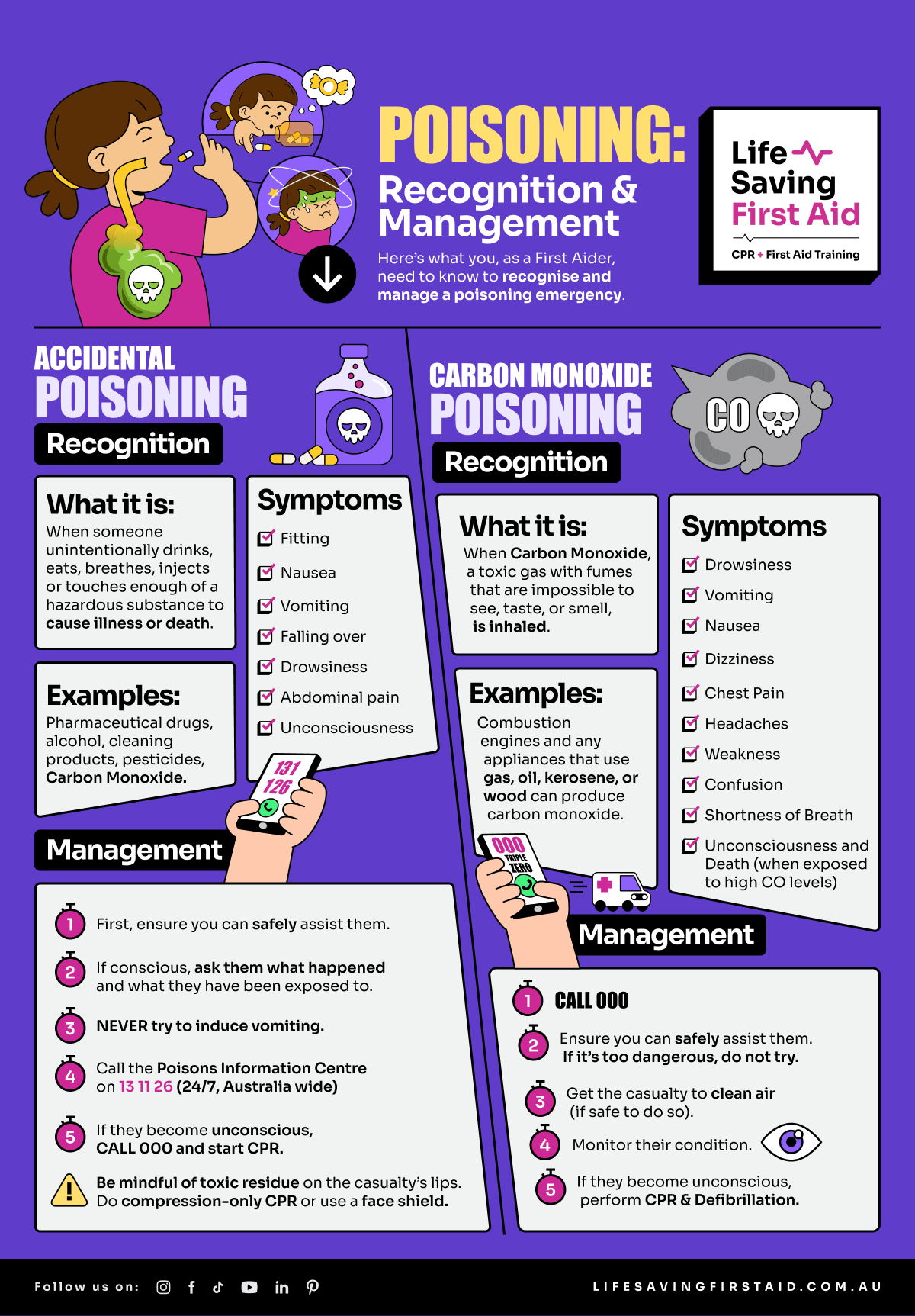
Introduction
In this article, we will cover Poison recognition and management, and what you, as a First Aider, will need to know to recognise and manage a poisoning emergency.
Poisons: Some facts and figures
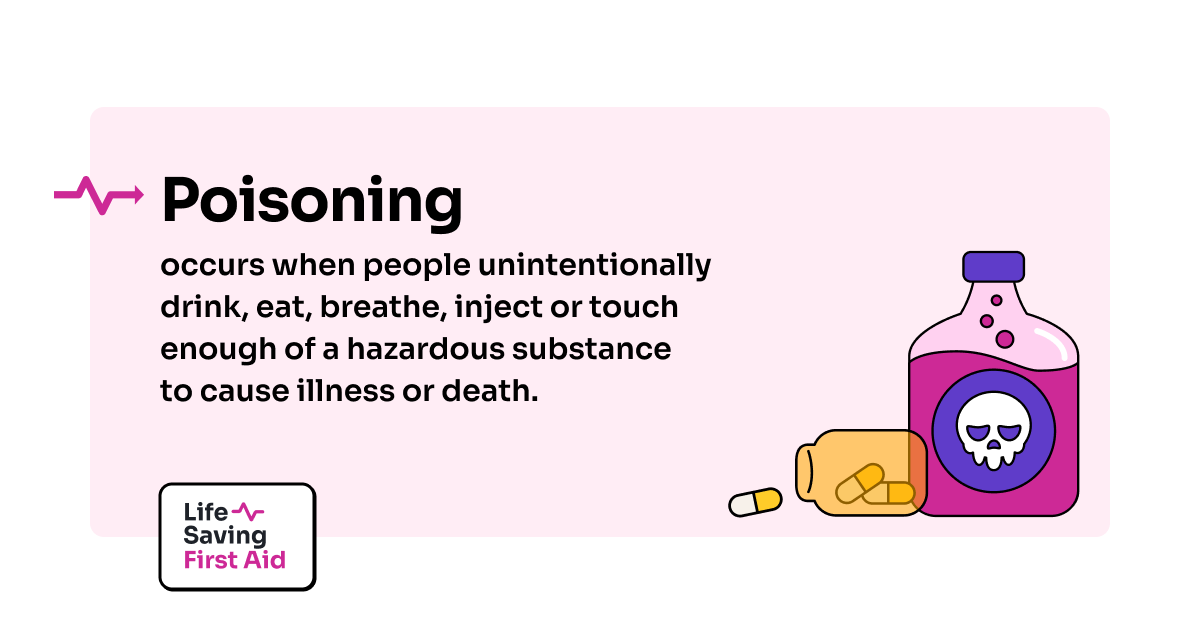
Poisoning occurs when people unintentionally drink, eat, breathe, inject or touch enough of a hazardous substance (poison) to cause illness or death.
According to the Australian Institute of Health and Welfare during 2018-19 in Australia, accidental poisoning resulted in 10,500 hospitalisations and 1,400 deaths.
Of the hospitalisations, 83% were due to harmful exposure to pharmaceutical drugs. The rest were due to other substances including household cleaners, etc. Young children aged 0–4 had the highest rate of accidental poisoning hospitalisations.
Children are often poisoned by substances left unattended and easily accessed. For instance, on a bench or table, ready to be used in visitors’ bags (medicines), or on bedside tables.
Don’t assume that high cupboards provide safe storage because children learn to climb to get to things. Therefore, a locked cabinet is the best storage option.
Recognition and Management of Poisoning
If your casualty has had a significant poisoning, any symptoms that develop will depend on several factors. For example, which medicine or chemical is involved and how much the person has been exposed to.
Poisoning Symptoms

Symptoms of poisoning may include:
- Nausea
- Vomiting
- Drowsiness
- Falling over
- Abdominal pain
- Fitting
- Unconsciousness
Poisoning Management
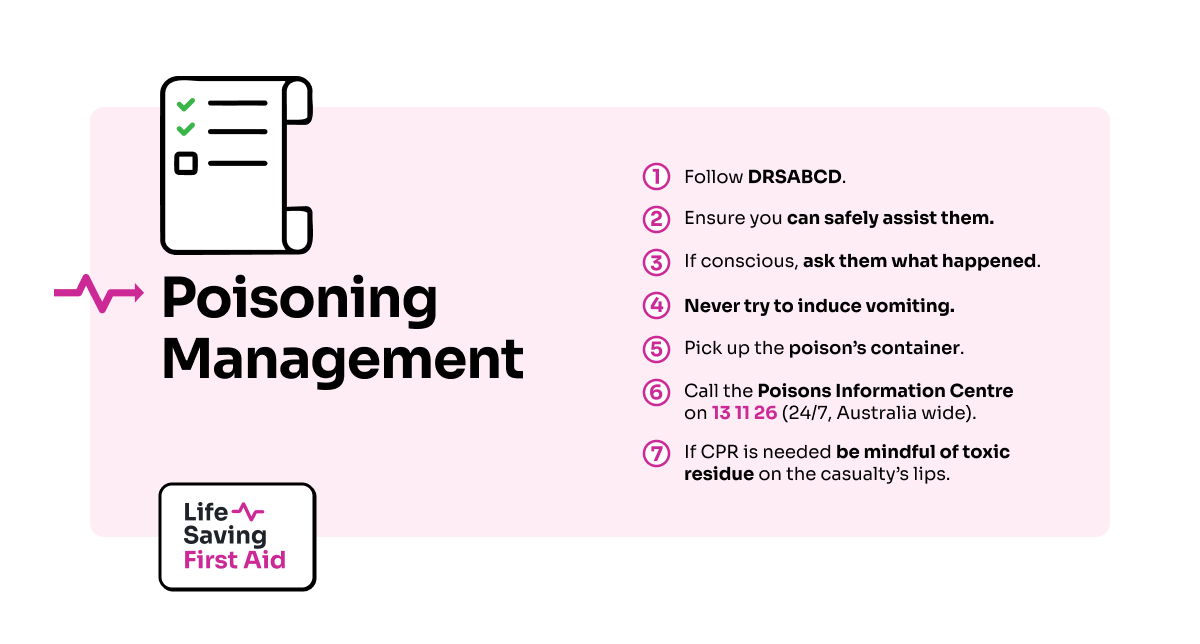
As always with First Aid, we will start with our initial action plan, DRSABCD.
Remember: some poisons are airborne.
- If conscious, ask the casualty what has happened and if they know what they have been exposed to.
- Never try to induce vomiting.
- Pick up the product container (if you have it and it is safe to do so) and take it with you to the phone. The Poisons Information Centre will want to know what ingredients are in the product.
- Phone the Poisons Information Centre on 13 11 26 (24 hours a day, Australia wide), where you will get advice on what to do next.
- If CPR is needed be mindful of toxic residue on the casualty’s lips, so use a face shield or do compressions-only CPR.
Carbon Monoxide
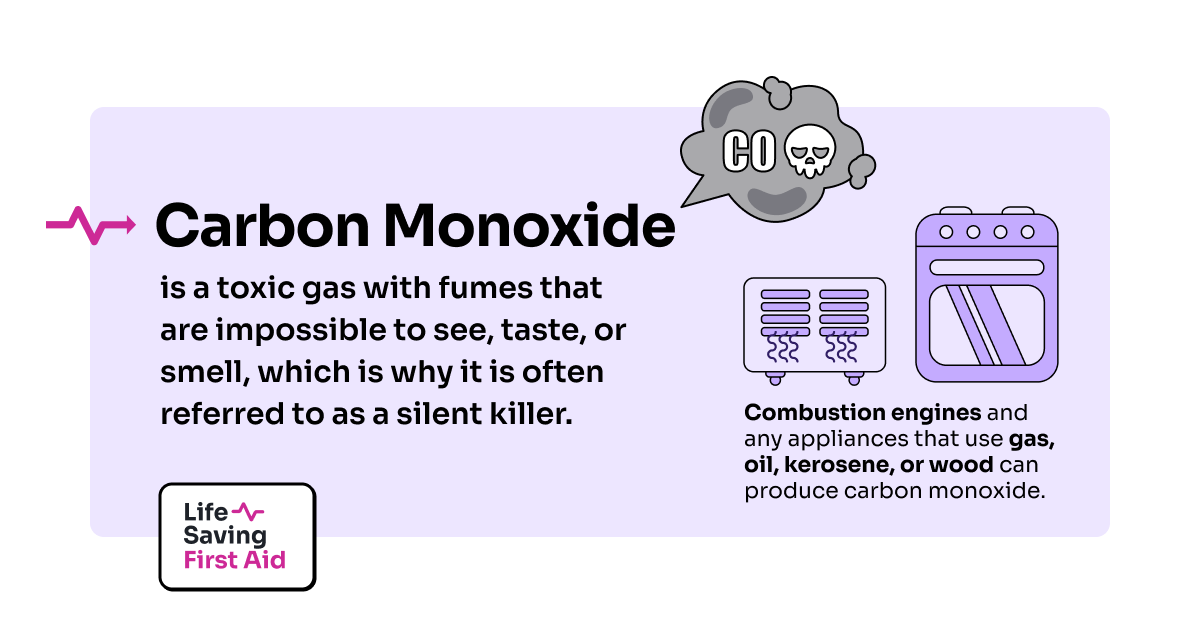
Carbon monoxide (CO) can be a hidden danger that many people are unaware of.
It is a toxic gas with fumes that are impossible to see, taste or smell. As a result, Carbon Monoxide is often referred to as a silent killer.
All combustion engines will produce Carbon Monoxide as well as any appliances that use gas, oil, kerosene, or wood – these can produce Carbon Monoxide too.
Carbon Monoxide Poisoning Signs and Symptoms
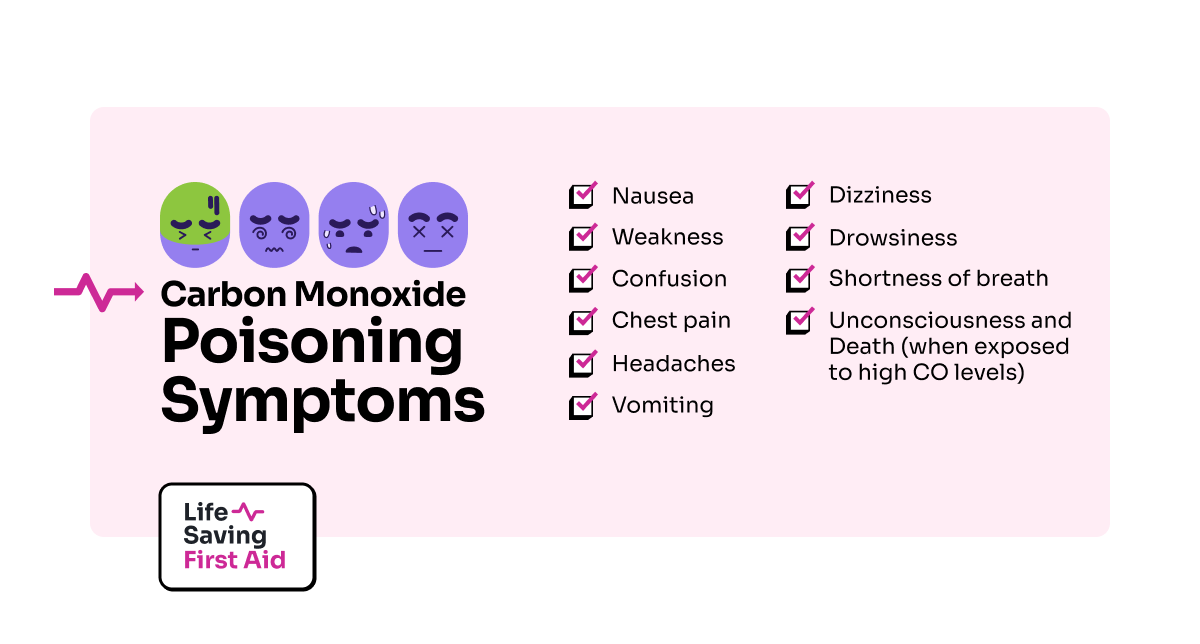
Carbon monoxide poisoning can often be mistaken for viral infections or the flu. Carbon monoxide replaces oxygen in the blood when inhaled and, as a result, this may cause symptoms such as:
- Headaches
- Drowsiness
- Shortness of breath
- Dizziness
- Nausea or vomiting
- Weakness
- Confusion
- Chest pain
- High levels of Carbon Monoxide can cause loss of consciousness and death
Carbon Monoxide Poisoning Management
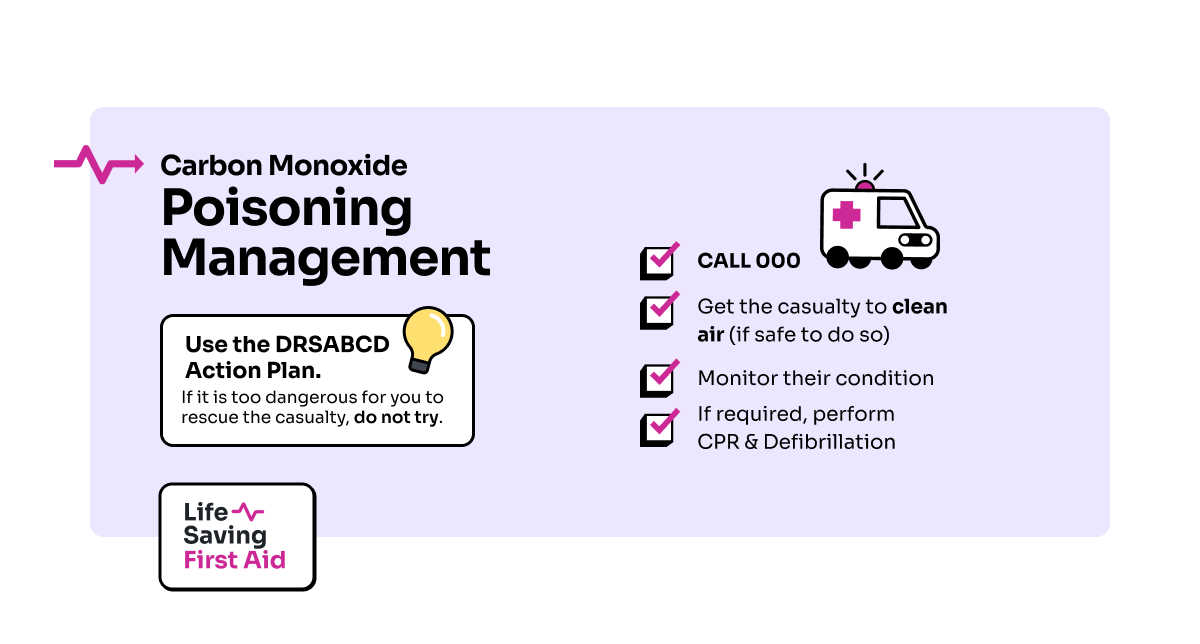
It is very important to use the initial action plan DRSABCD because in Carbon Monoxide Poisoning there may be a real threat to your safety.
- If it is too dangerous for you to rescue the casualty, do not try.
- CALL 000
- Remove casualty to clean air, providing it is safe for you to do so
- Monitor their condition
- If required, perform CPR and use a Defibrillator (remember to follow the prompts)
Recap
So, let’s recap the main points:
Firstly, symptoms of Poisoning may include:
- Nausea, vomiting, drowsiness, falling over, abdominal pain, fitting, and/or unconsciousness.
- Call poisons hotline on 131126
- Don’t induce vomiting
- DRSABCD
Secondly, for Carbon Monoxide poisoning:
- Follow DRSABCD
- CALL 000
- Remove casualty to clean air, providing it is safe for you to do so
So, if you liked this article click here for more First Aid related info.
Well, that’s that. Until next time… Stay safe.
